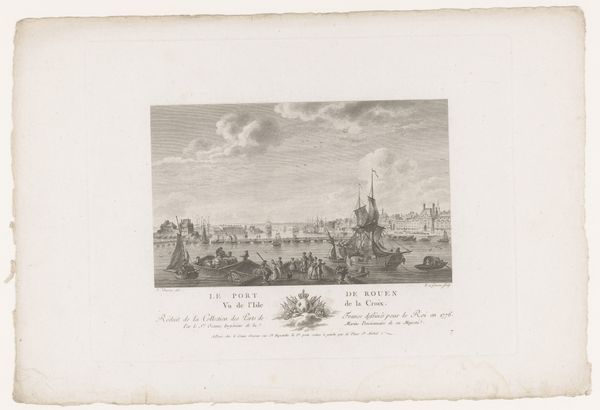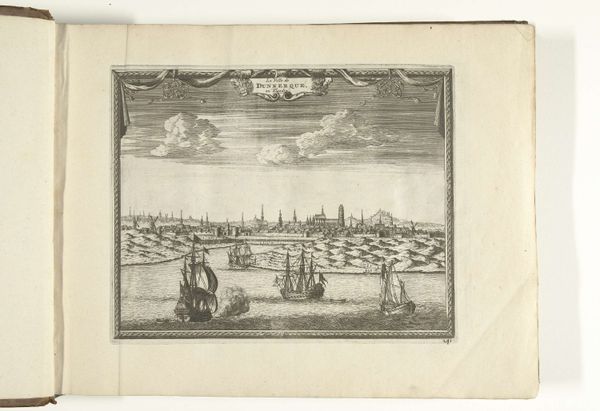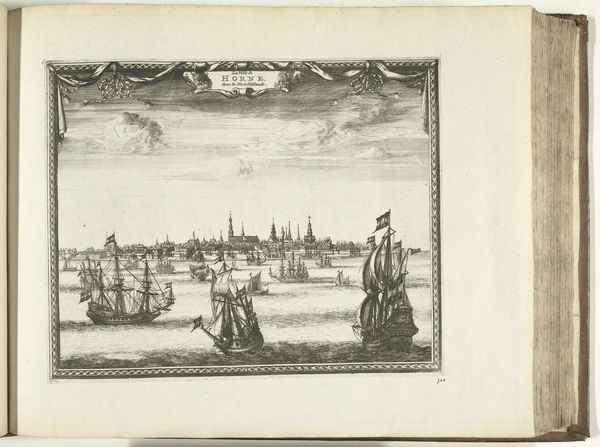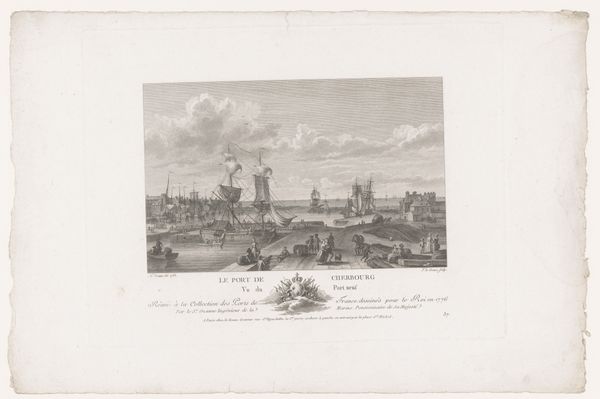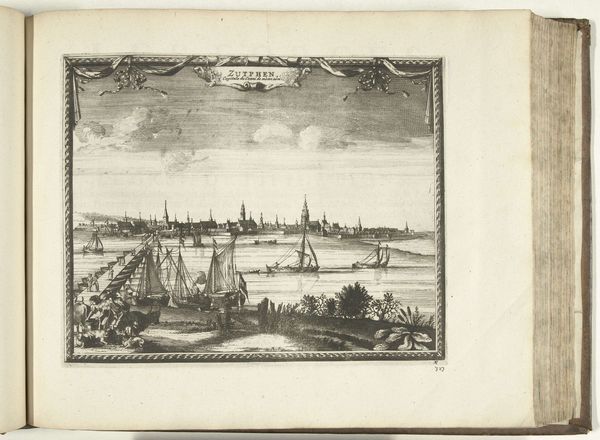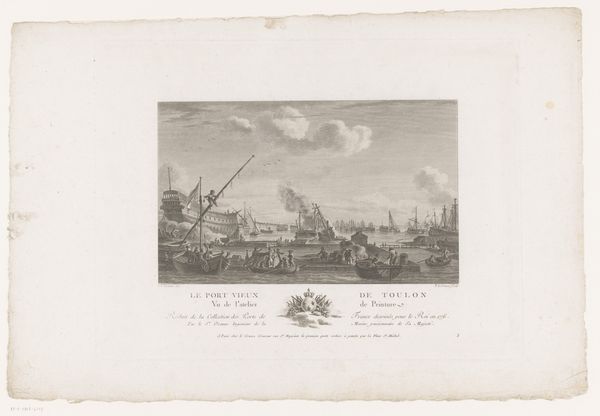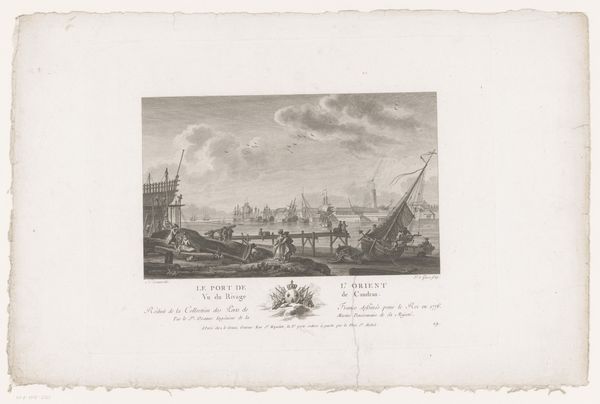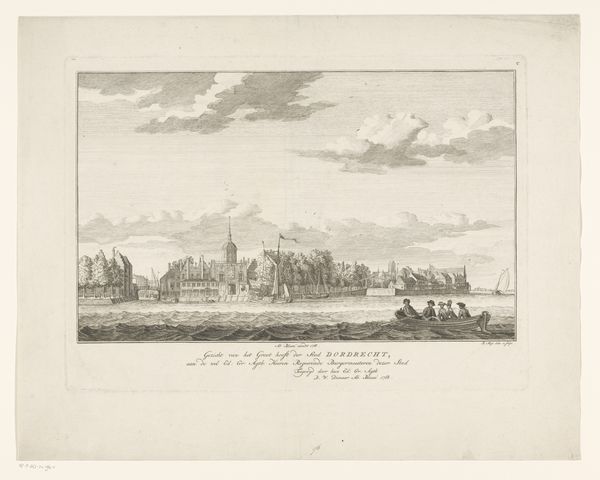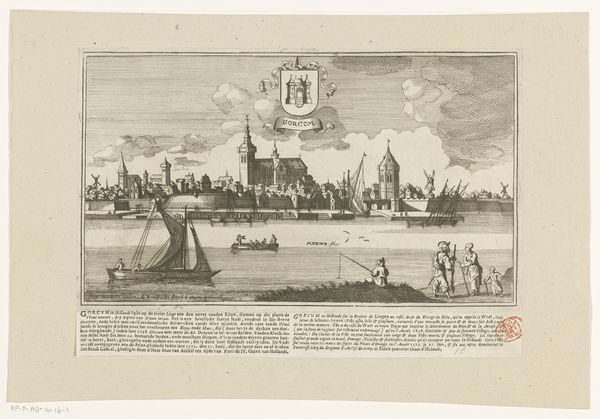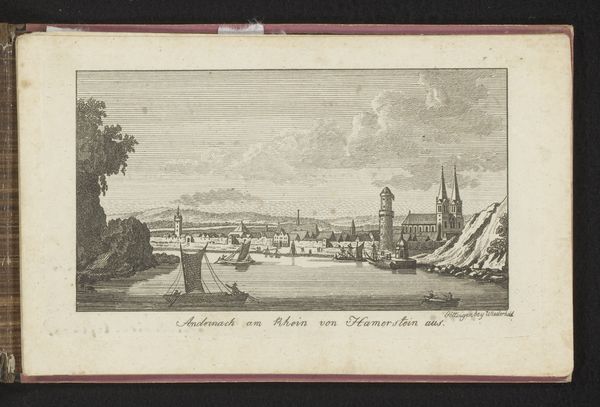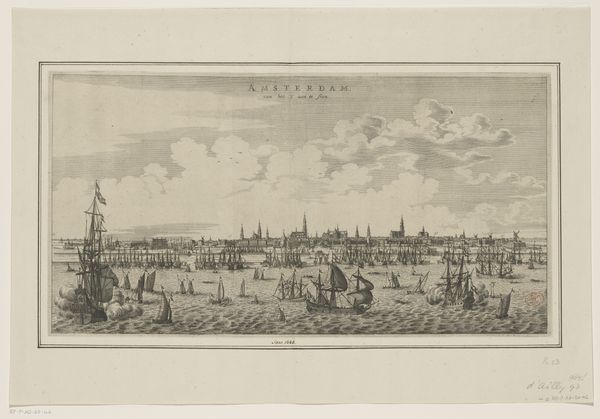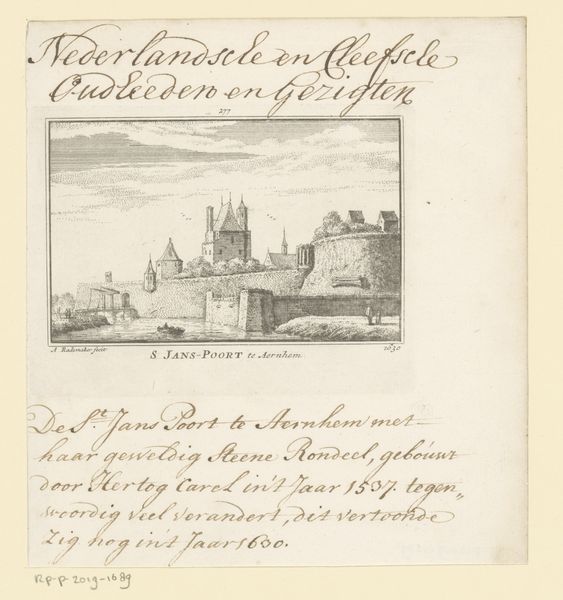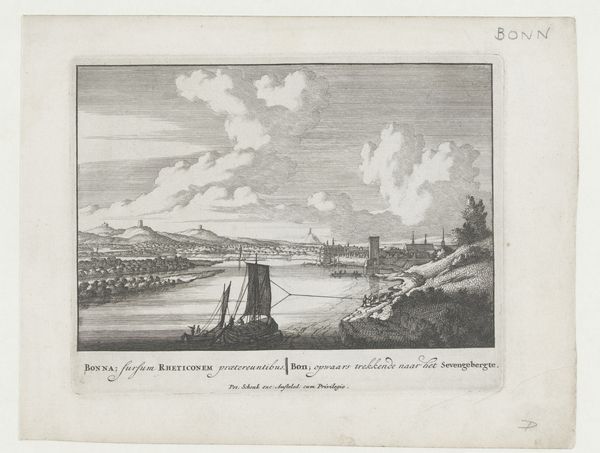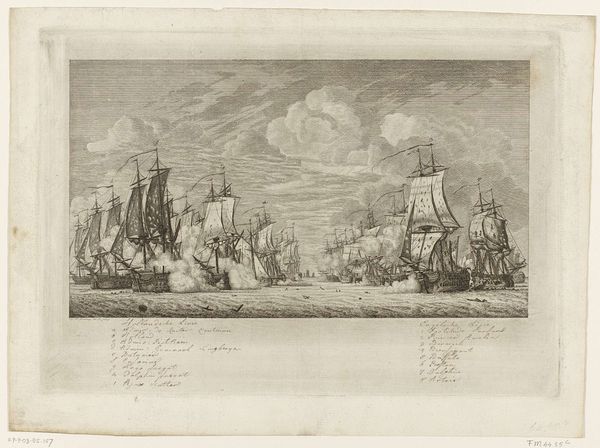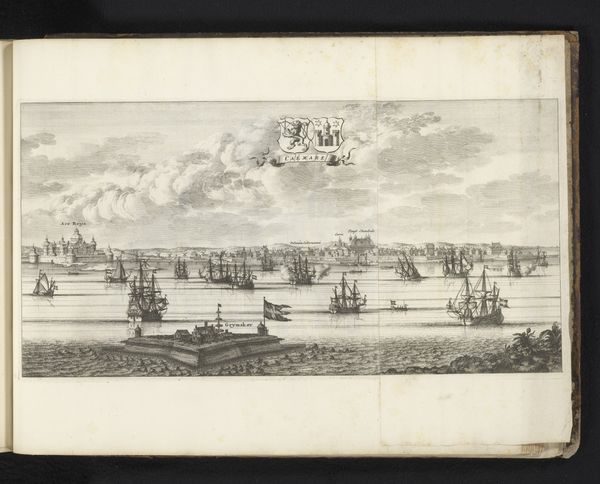
print, engraving
#
baroque
#
dutch-golden-age
# print
#
landscape
#
cityscape
#
engraving
Dimensions: height 83 mm, width 114 mm
Copyright: Rijks Museum: Open Domain
Curator: Here we have Abraham Rademaker's "Gezicht op Arnhem," a cityscape print dating from 1727 to 1733. Editor: It's interesting how the print is presented almost as an architectural diagram; its linear focus conveys an air of placid control. There's a detachment at play here, as if viewing the city from a remove. Curator: The buildings and their arrangement, dominated by the Great Church, serve as visual anchors within the community. It subtly references established orders of power within the 18th century social structure. It’s interesting to consider this view as a reflection of societal hierarchies, a memory etched in place. Editor: Do you think it perhaps sanitizes and aestheticizes lived realities? The lives of working-class people, the impoverished neighborhoods…these are notably absent from this “view.” Who is really given “voice” in this so-called image of Arnhem? Curator: These cityscapes by Rademaker became fashionable, reflecting burgeoning middle-class sensibilities and local pride in municipal achievement. Such images visually affirmed the aspirations and ideals of the age. There is a conscious element of creating cultural continuity through architectural depiction. Editor: True, but that 'continuity' is exclusionary. By celebrating existing power structures and idealized versions of Dutch progress, doesn't this type of art contribute to masking inequity? It’s part of the complex politics of landscape. Curator: Indeed, all historical representations are inherently selective and colored by ideology. Here, Rademaker provides insight into Dutch culture's visual strategies in the early 18th century—in how cultural memory and civic virtue could be literally built into perception. Editor: Agreed. I appreciate how you point out that visual encoding, where the buildings signify particular societal ambitions, prompts reflection on which stories are being remembered…and which erased. Curator: Seeing the cityscape from the symbolic angle allows us to acknowledge cultural pride and its limitations, wouldn’t you agree? Editor: Precisely! It's a potent example of how we can deconstruct these idealized "views" to uncover more inclusive social meanings.
Comments
No comments
Be the first to comment and join the conversation on the ultimate creative platform.
